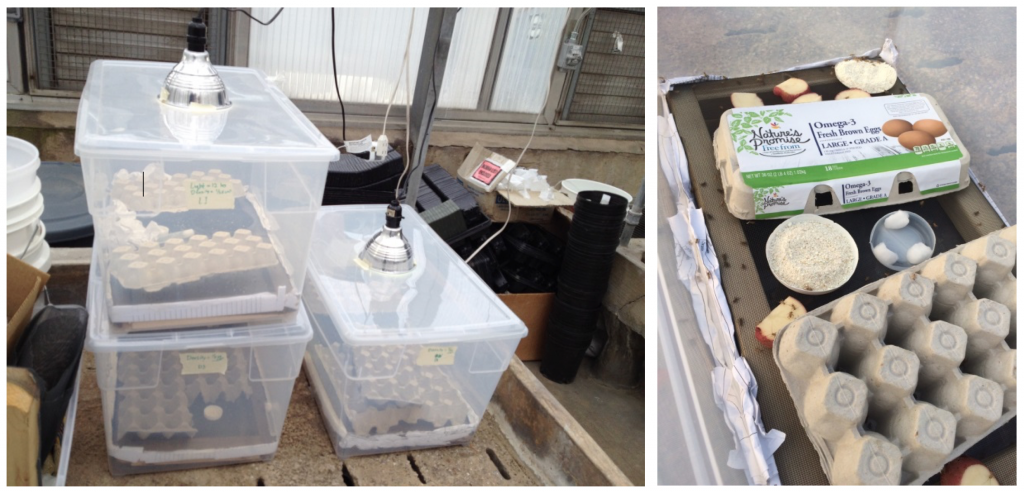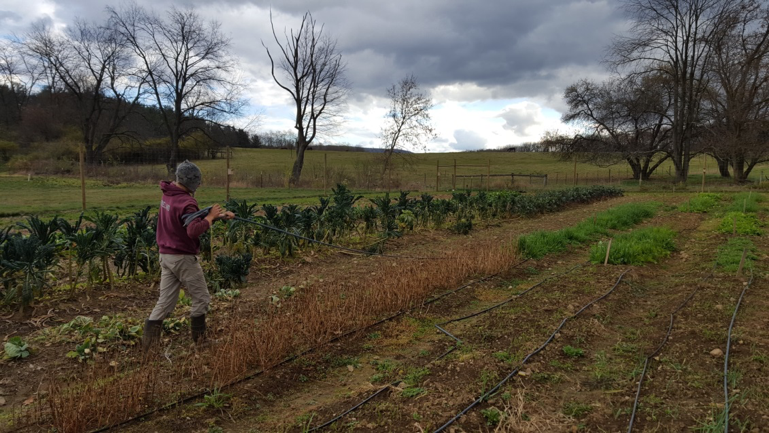By Alex Curtze
As the leaves change and days become colder, I reflect on my time working as a production intern this fall. I entered this internship with an ecological background and breadth of home gardening experience, and I knew that there is an immense difference between farming and home gardening. This difference was apparent throughout the semester as I gained a more holistic understanding of small-scale farming operations and a multitude of techniques (e.g., season extension, crop succession) that I never encountered in my home garden. Additionally, I learned a great deal about starting an unconventional business operation and about insect farming from my cricket farming project.

The one-acre farm in the fall (Alex Curtze)
A small-scale farm, unlike a backyard garden, requires extensive planning, organization, precision, and thought in order to ensure a diverse harvest from early spring to late fall. For instance, a small-scale farmer must consider the amount and type of produce they will sell during the following growing season (e.g., CSA shares, wholesale), how long the plants will produce (e.g., two weeks), and what the customers desire. These considerations are especially important during the beginning and end of the season when it’s predominantly cold and dark.
For example, Jean-Martin Fortier, author of The Market Gardener, recommends that farmers outline the contents of each CSA throughout the season with specific products in the very first and last CSAs of the season. Moreover, although I didn’t personally install the floating row covers (see picture below), I learned about their application for extending the season of certain cold-season crops such as spinach and arugula. Finally, contrary to conventional belief, I realized that scaling up production doesn’t always necessitate buying big machinery (e.g., tractors), but rather, necessitates strategic farm planning, maximizing bed area usage, and properly integrating small hand tools into the farm. If properly integrated, a small farm of one to two acres can yield considerable quantities of produce.

Student Farm Club members Paul and Brandon check out Alex’s cricket farming operation in the greenhouses. (Alex Curtze)
The cricket farming project, although we experienced challenges this semester, taught me that unsuccessful experiments are an opportunity to reassess the problem and investigate solutions to resolve the problem. Consequently, one gains a deeper and more intimate understanding of a system by unearthing unforeseen variables and developing solutions to those problems.
For instance, although I thought that the plastic bin design was perfect (see picture below), I overlooked the fact that crickets can easily squeeze through tight spaces. This unforeseen problem led to considerable cricket mortality, and now, forces me to develop a new bin design that satisfies these requirements without compromising space and labor efficiency. In essence, although my initial setup was unsuccessful in a few ways, its shortcomings are opportunities for further innovation.

Alex’s initial design (Alex Curtze)

